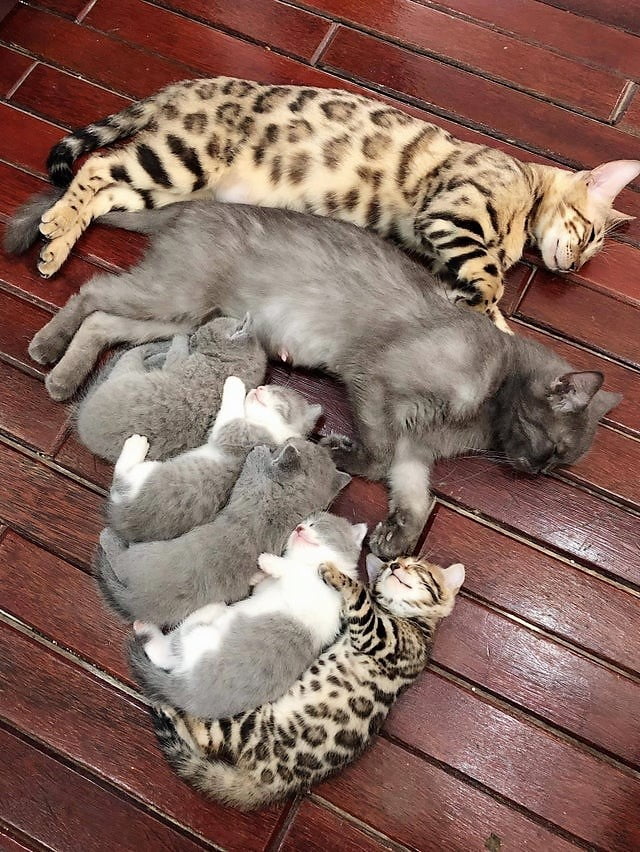There is an official world record for the largest number of kittens in a single litter. The source of the information is, of course, the Guinness World Records website. They state very succinctly that the world’s largest litter of domestic cats were born on 7 August 1970 when a Burmese/Siamese cat belonging to V. Gane of Kingham, Oxfordshire, UK, gave birth to 19 kittens, four of which were stillborn. That is verbatim from the Guinness website. They don’t add anything else. It is sad to read that for of the 19 were stillborn.
In all honesty, this might not be the world record. This is because there may have been a larger litter which was unreported. All world records depend upon the event being recorded and reported. They also depend upon the Guinness World Records’ criteria being met in order to have the record accepted and registered.

The average litter size is 3-5 kittens. A young mother or first-time mother should expect to have around 2-3 kittens. When she’s a bit older at 3-4 years-of-age a cat is more likely to have around 4-5 kittens per litter. It depends how often she is bred.
At what age are domestic cats when they have the first litter? My veterinarians’ book states that the best time to spay a female is at 5-7 months of age, before she goes into her first heat. Online research indicates that females can get pregnant as early as four months-of-age. There is a clash in these 2 sources of information. However, my vet book also states that many veterinarians and animal shelters are now doing spays and neuters on kittens as young as seven-weeks-of-age in an effort to combat pet overpopulation. So, the 4-months-of-age being the youngest that a domestic cat can become pregnant is probably accurate.
A “queen” does not need to have a litter of kittens to be psychologically fulfilled or to settle down in her behaviour. Regrettably, some cat caregivers believe that this is the case. It is one of the reasons why there is a cat overpopulation problem or to put it another way why there are unwanted cats in shelters.
One surprising fact about domestic cat litters is that the kittens of one litter can have different fathers. It is because female cats are “induced ovulators“. And they mate with more than one male. This can prevent the males not recognising their own kittens. Not that many of them are interested in any case. Some males do care for their kittens but in general this is not the case. It is also why you see some coat patterns on newborn kittens which are very dissimilar to that of the male cat you thought was their father.

